CTV:Ancient Technology
Archaeological Goals
• Identifying technological patterns in the various chronological periods of Timna’s smelting activity.
• Interpreting smelting technologies in their respective chronological timeframes as well as in a study of the longue-durée
• Understanding the technological development of copper smelting throughout Timna’s active productions phases

Slag samples from Site 34 - "Slaves' Hill"
Archaeological Question
• Can the glassy phase inside the copper slag present a proxy for varying ancient smelting technologies?
• Quantity of glass inside the slag
• Quality of glass inside the slag
• Location of glass inside the slag
Research Methods
• Identifying in-situ crystallographic and amorphous phases inside the slag
Main analytical method: SEM-EDS, image segmentation Sample state: Solid Cross-Section
• Mapping, Structure, Spatial Crystallographic and Elemental composition
• Quantifying crystallographic and amorphous phases in the slag Main analytical method: XRD, TGA (Thermo-Gravimetric-Analysis), Total-Content (Microwave Acid Digestion with ICP-OES) Sample State: Powder
• Quantitative Crystallographic and Elemental composition
Research Background
• Timna’s five main smelting activity periods:
o Early Bronze Age 3500-2200 BCE
o Late Bronze Age 1400-1100 BCE
o Early Iron Age 1100-950 BCE
o Iron Age II 950-800 BCE
o Early Islamic 650-1000 CE
Research Material Collecting three copper slags from five different sites, corresponding to five different technological periods:
Total: 15 slag pieces
Early Bronze Age: Site: Yotvata 44 (Y-44) (ca. 2500 BCE)
Late Bronze Age: Site: 3 (ca. 1150 BCE) Early Iron Age Site: 34(T) (ca. 1000 BCE)
Iron Age II Site: 30 (ca. 900 BCE)
Early Islamic Period Site 34(B) (ca. 700-900 CE)

Prof. David Kosson and Prof. Erez Ben-Yosef collecting samples in Timna. November 2022
Sample Selection:
• Located three (large enough) intact slags from each site: Total: 15 Slag pieces
• Each intact slag was separated into two samples for two purposes: 1. Solid Cross-Sectioning: Epoxy mounting and polishing (for SEM) 2. Powder: Plate crushing and ball-milling (for XRD)
• Samples: Two from each slag 15 for sectioning 15 for powder Total: 30
1. Solid Cross-Sectioning: Procedure
• Dry-sawing or chiseling the slag (shared with powder procedure)

• Extracting a small piece ca. 4x4 cm with an appropriate internal section

• Epoxy mounting and 18 hours hardening period

• Wet-sawing both ends for surface flatness


• Polishing procedure
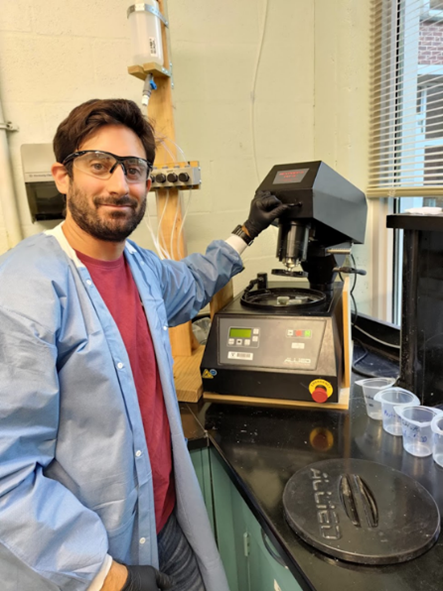

• Polished Samples- Ready for SEM-EDS

2. Powder: Procedure
• Dry-sawing or chiseling the slag (shared with sectioning procedure)
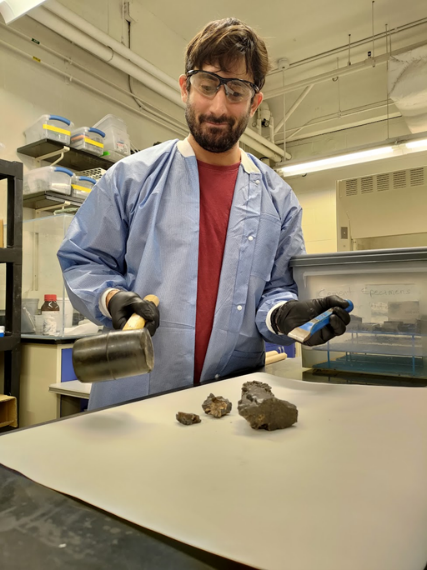
• Extracting either several pieces or a small enough piece for the plate crusher
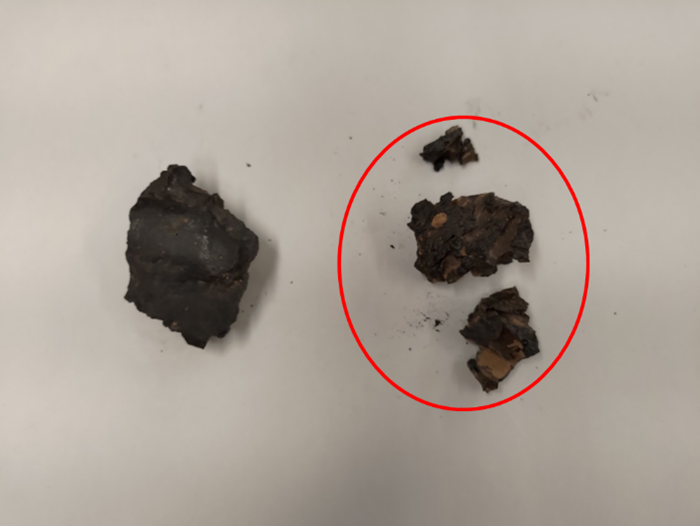
• Plate-crushing to rough grains
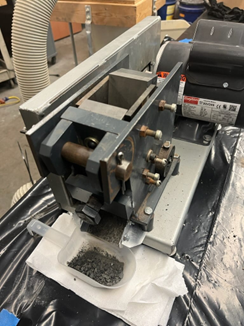
• Ball-milling to fine powder

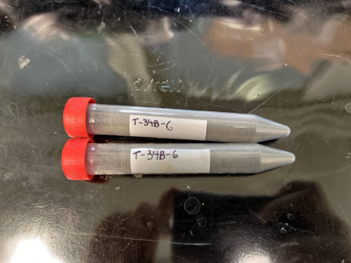
Further research
Cross-Sectioning
• Initiate SEM-EDS process and assess the slag mineral morphology Powder
• Thermal gravimetric analysis (TGA) + Total Content analysis
• XRD for crystallographic analysis

